Jackery Explorer 1000 Plus Review
An efficient, good value and powerful battery station.
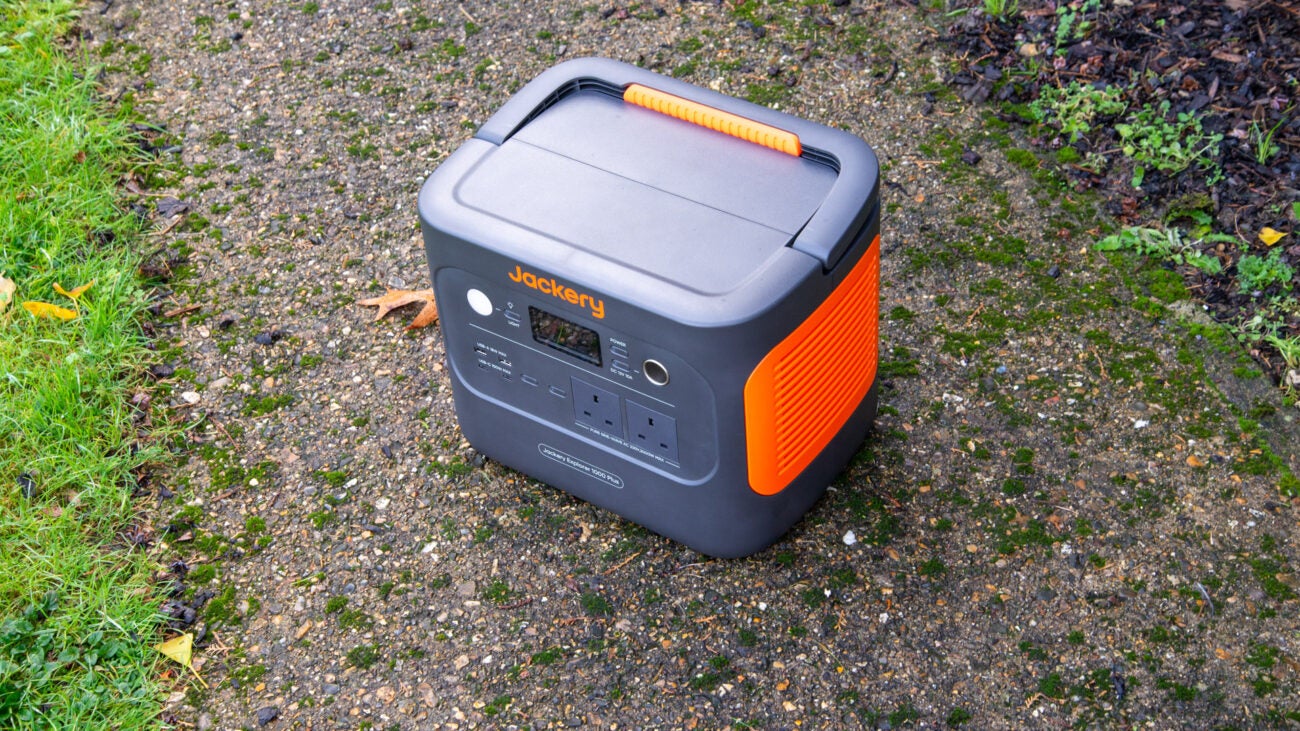

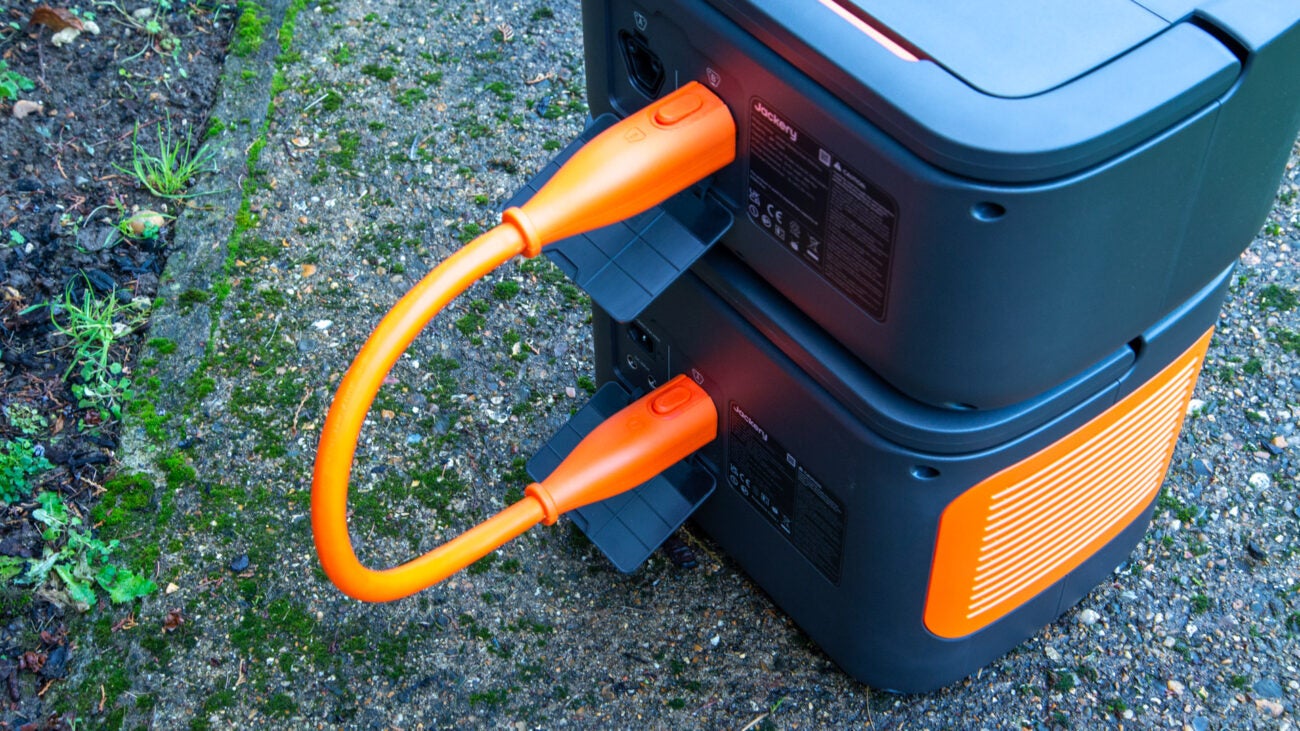


Verdict
A big upgrade on the old model, the Jackery Explorer 1000 Plus uses the latest battery technology to prolong life, which makes this 1264Wh battery even better value. Easy (for its size) to carry around, thanks to the clever handle, this battery system can power devices up to 2000W, and is expandable with additional battery packs, making it a great choice for camping trips and more.
Pros
- Excellent carry handle
- Expandable
- High efficiency
Cons
- No UPS/EPS
Key Features
- CapacityThe main unit has a capacity of 1264Wh, with additional 1264Wh batteries available for expansion.
- Power outputA total of 2000W peak output means that most UK appliances can be powered by this battery pack.
Introduction
There’s always a trade-off when buying a power station that you want to take places: you need enough power for it to be useful, but you need it light enough to carry where you need it.
The Jackery Explorer 1000 Plus gets the mix right, offering 1264Wh of power (just over 1kW), and a chunky carry handle that makes it relatively easy to shift it around.
Long life, great price and expandable capacity make it a great choice for those who need plenty of power on the move.
Design and features
- Chunky carry handle
- Expandable capacity
- Useful display and smart app
If there’s one thing I can say about Jackery’s products, it’s that they’re brilliantly designed. Similar to the Jackery Explorer 1500 Pro, the 1000 Plus is designed like a cooler, with a chunky lift-up handle on top.
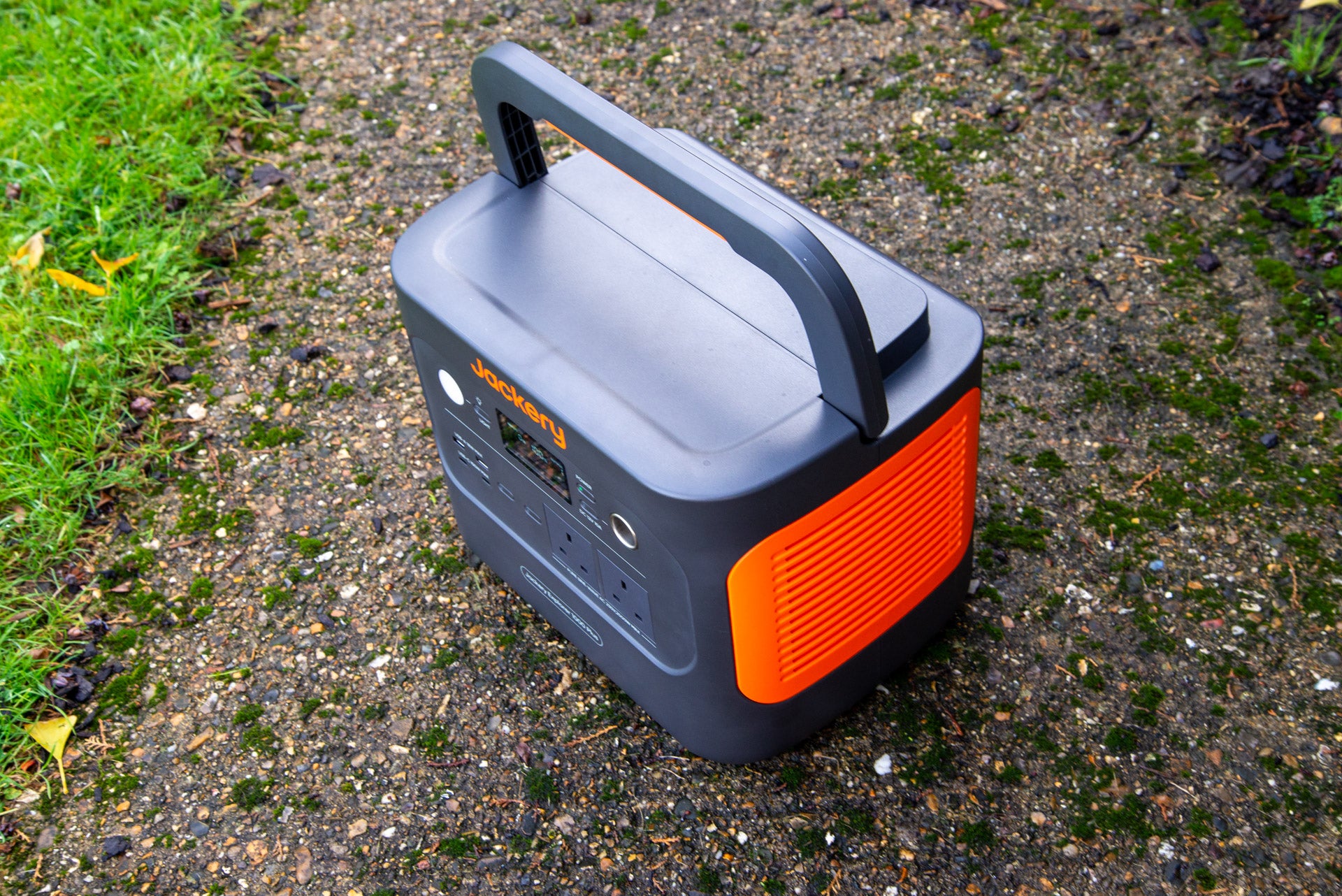
Weighing 19kg, it’s not a light product, but the handle did make it easy to carry around, either one- or two-handed. Certainly, from lifting into the car and then out again somewhere else, this power station gets the portability element right.
The base unit has a 1264Wh battery inside, which is a sensible amount of power for camping: enough to take care of higher-capacity devices, such as coffee machines and laptops while keeping the size down to make the battery portable.
If you do need more power, optional Jackery Battery Pack 1000 Plus batteries are available. Each has a 1264.64Wh capacity, and you can daisy-chain three additional models together, adding up to 3793.92Wh of capacity.

Each battery pack has its own carry handle, so everything can be moved in stages, or you can pick and choose how much capacity you want to take with you. This makes this system more flexible than the Ugreen PowerRoam GS1200, which can’t be expanded.
Batteries are connected together using the chunky connection cables that plug in at the back. This requires the covering flap to be folded down, sticking out from the side where it could get caught. Ideally, the battery expansion ports would be covered by a rubber plug, which could be removed or be more easily tucked away.
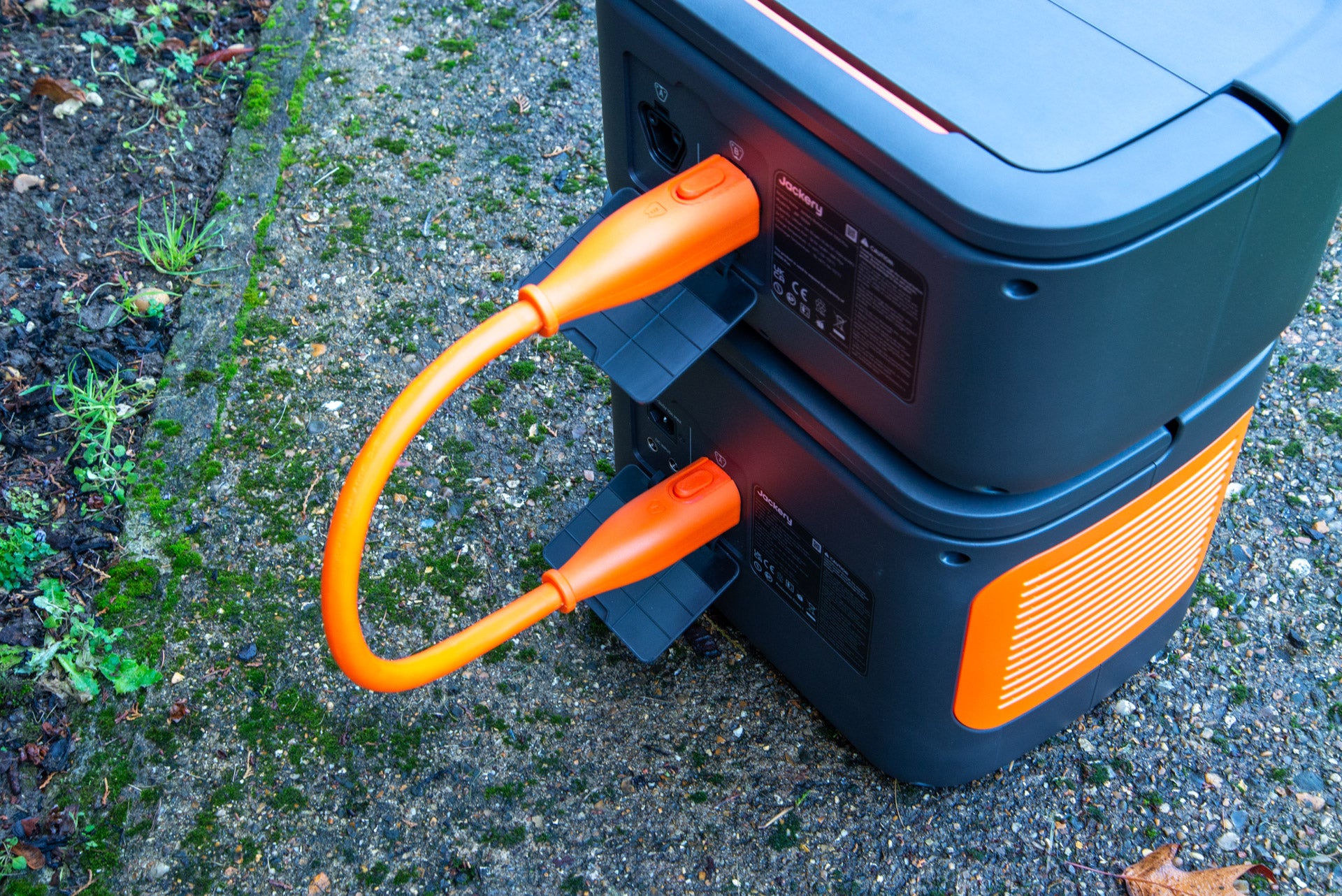
Only the main Jackery Explorer 1000 Plus has expansion ports on it: there are two 18W USB-A ports for charging phones and the like, plus two USB-C ports rated at 100W maximum. Given the move to USB charging, a couple of extra ports would have been nice.
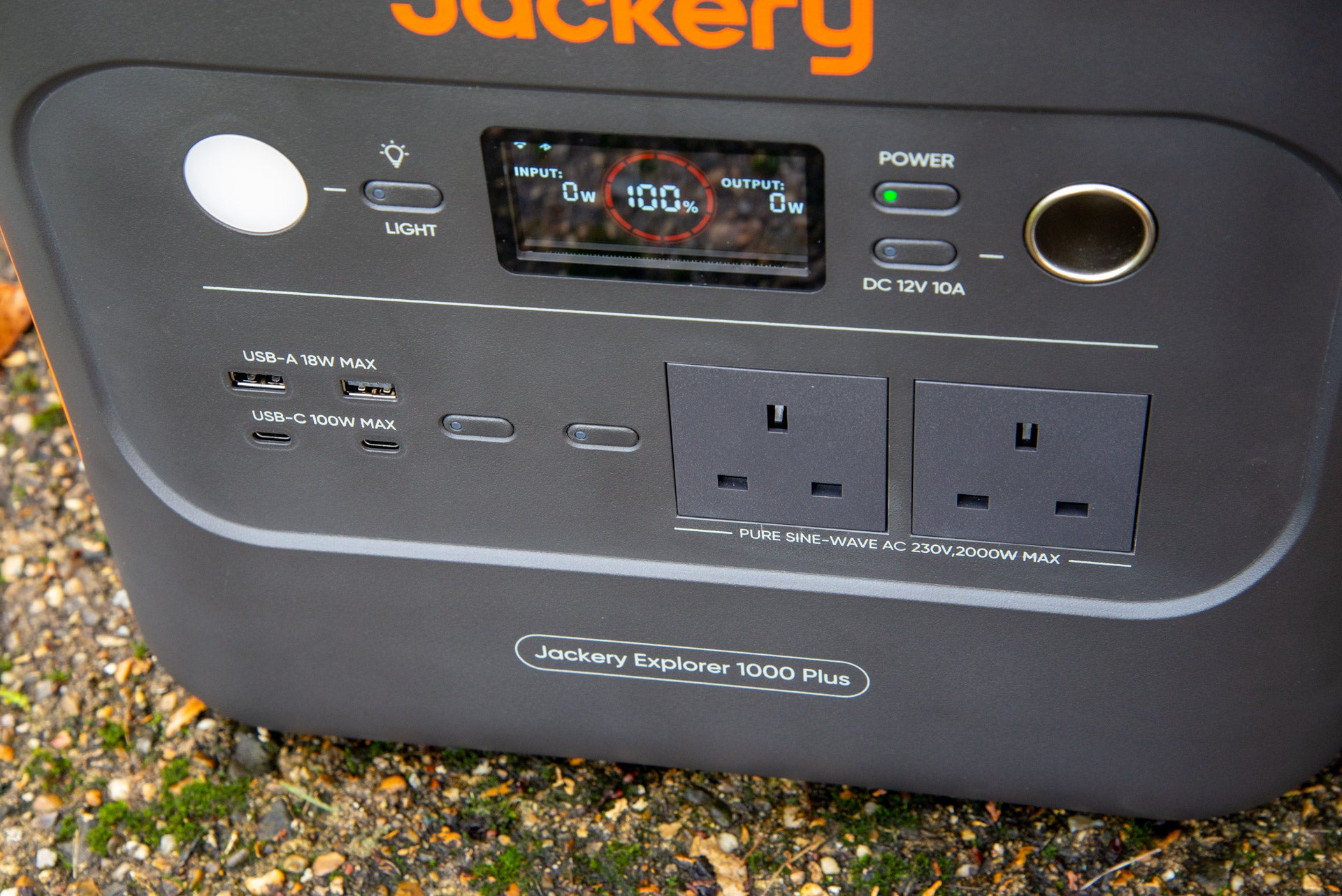
Dual UK plugs sit on the front, orientated and aligned similarly to a double-power socket, so you should be able to use both with ease; only a very chunky plug would potentially block the other socket.
These sockets are rated at a maximum of 2000W peak output, which means that they will power the majority of appliances, including some electric heaters.
There’s also a 10A, 12V car socket. Each port (or range of ports) is controlled via a dedicated switch.
A light on the front is useful for highlighting the area in front of the Jackery Explorer 1000 Plus, but the system is too heavy to use as a torch. This light has an on mode, and an SOS mode blinking out in Morse code.
Power the Jackery Explorer 1000 Plus on, and its screen lights up, showing the charge level of the main battery, the input power (and time left to charge), and the total output level (and time remaining).
Connect a secondary battery, and the main display’s charge level doesn’t take the extra battery into account. Instead, the expansion batteries have their own charge status.

Compatible with the Jackery app, the Jackery Explorer 1000 Plus can be monitored over Bluetooth or Wi-Fi. The app replicates what’s on screen, and gives remote control over the outputs.
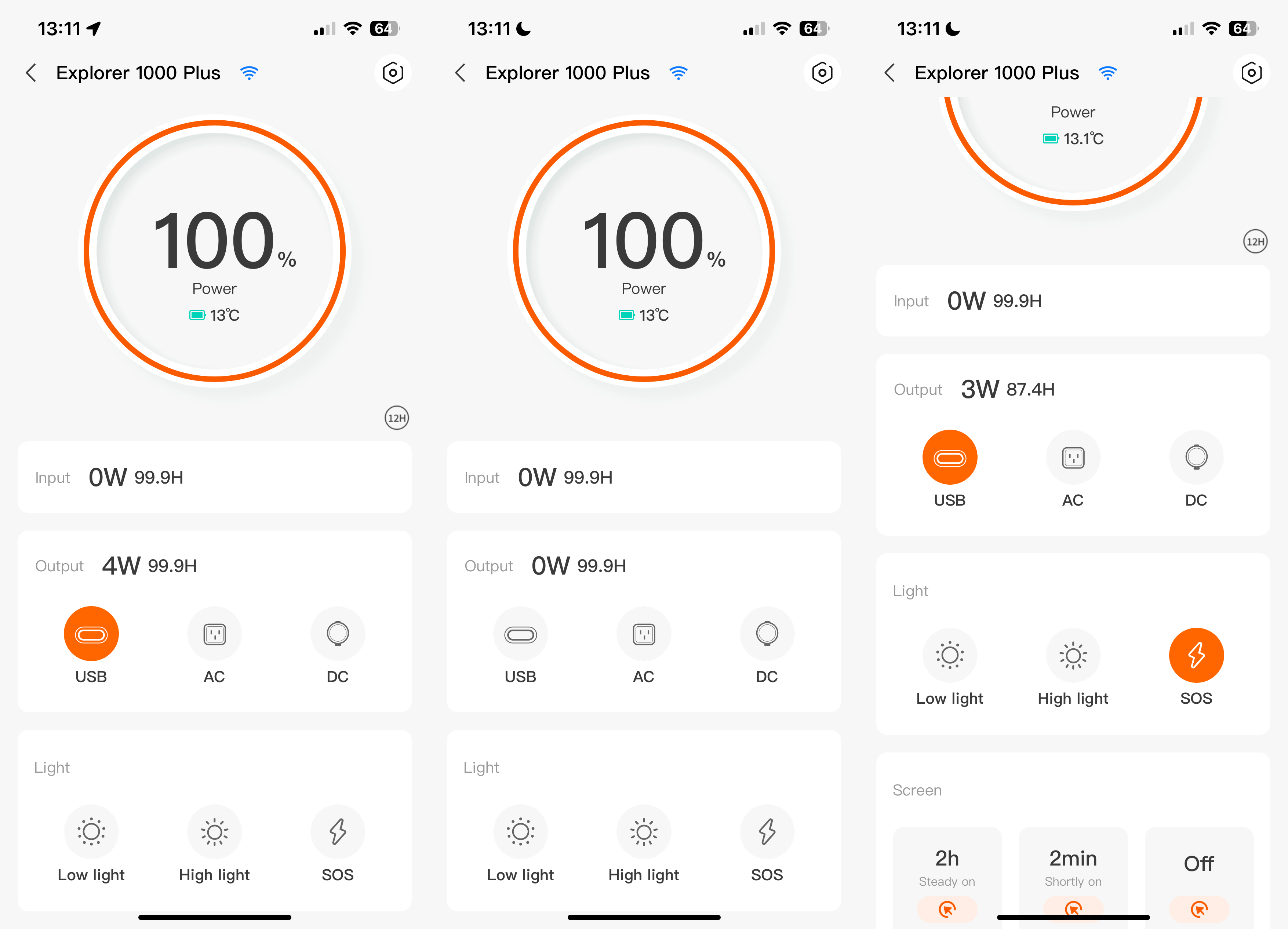
Plus, the app gives a few extras: slow charging can be turned on to reduce fan noise to below 30dB; and the battery settings can be changed so that the battery stops discharging at 15% and charges to 85% maximum. That setting reduces capacity, but will increase battery life by 30%, according to Jackery.

Charging and solar
- Fast charges in 1.7-hours
- Takes up to four 200W solar panels
Charging options are varied. A kettle plug is provided in the box, delivering a 10A input from the mains, which will recharge the battery in 1.7 hours. I tested charging the battery from flat, and it used a total of 1.365kWh, which is 108% of the battery capacity. That’s slightly more efficient than the UGreen PowerRoam GS1200.
There’s no mains passthrough on this device, so the Jackery Explorer 1000 Plus can’t be used as a UPS or EPS. You can charge the Jackery Explorer 1000 Plus while using devices plugged into it, though, just at the 2000W output limit.
Optional solar input is available, with the Jackery Explorer 1000 Plus taking up to four 200W solar panels (a total of 800W). Jackery sells a wide range of solar panels, which are nicely designed, folding up into handy packages that are easy to carry around. On a day with the ideal conditions and maximum solar input, the Jackery Explorer 1000 Plus can recharge in just two hours.
As always with solar, whether or not it’s a good choice depends on where and when you’re going. If you’re often somewhere relatively sunny and away from mains power, then solar panels are a good addition; otherwise, they can be quite expensive.
Finally, you can recharge from a car socket, although the 14.5-hour charge time is far from speedy.
Performance
- Cheap per kWh
- Efficient discharging
Using LiFePO4 batteries, the Jackery Explorer 1000 Plus runs on the latest battery technology, which is good news for longevity. While the previous Jackery Explorer 1000 Pro would drop to 80% capacity after 1000 cycles, the Jackery Explorer 1000 Plus is rated to be 70%+ after 4000 cycles.
If we take the battery capacity when new with those 4000 charge cycles, and assume a linear degradation down to 70% capacity, the Jackery Explorer 1000 Plus will have held around 4297kWh in this lifetime. Given the price (£1149), that means it costs around 27p per kWh to store electricity. That’s exceptionally cheap compared to a lot of the competition. Remember, there’s also a cost of the electricity to power the battery, which I have not included here, as that could be from a standard power socket on a normal tariff, an off-peak tariff, or via solar.
After those 4000 charge cycles, the Jackery Explorer 1000 Plus may well continue working, but its battery capacity will continue to drop over time.
Testing the battery with a 1kW load, I found that it was 83% efficient, with a total power draw of 1052Wh. Again, that’s very competitive, and the wastage is down to using the inverter to convert DC power into AC power.
Latest deals
Should you buy it?
You want a portable and powerful battery station
With its flip-up handle, decent capacity and powerful output, the Jackery Explorer Pro 1000 copes with most jobs well.
You need more power
For stationary use where you don’t need a system to be as portable, there are battery stations that pack in more offline power.
Final Thoughts
Only the Dabbsson DBS2300 is cheaper per kWh of storage, working out at around 21p per kWh, based on its 4500 charge cycles and high 2330Wh battery. However, that system is considerably more expensive to buy, heavier, and not easy to carry around.
With the Jackery Explorer 1000 Plus, you get a portable power station that is simple to pick up and move around, and with expandable power. If you need something powerful for camping trips or use in a caravan that can cope with powerful devices, then this is a great buy.
How we test
We test every battery station we review thoroughly over an extended period of time. We use standard tests to compare features properly. We’ll always tell you what we find. We never, ever, accept money to review a product.
Find out more about how we test in our ethics policy.
We test with a variety of devices to see how long the battery will last.
We test different charging methods to see how quickly the battery can be topped up.
FAQs
It’s rated to last for 4000 charge cycles, with capacity dropping to around 70% at the end of this time. That should be well over ten years of use.
It can power devices up to 2000W, which covers most domestic appliances.








